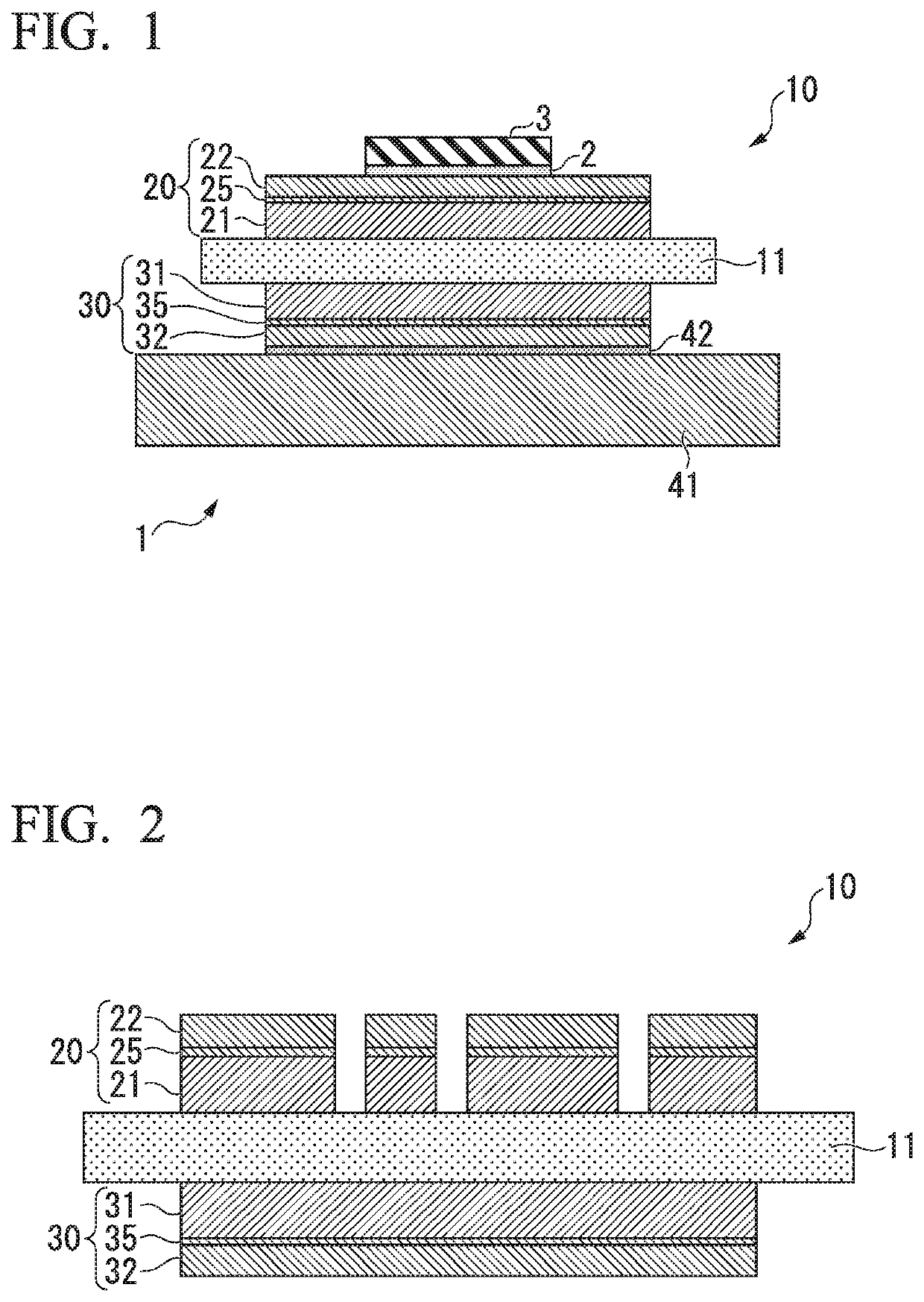Method for manufacturing insulated circuit board, insulated circuit board, and thermoelectric conversion module
a technology of insulated circuit board and thermoelectric conversion module, which is applied in the direction of printed circuit manufacturing, printed circuit non-printed electric component association, printed circuit aspects, etc., can solve the problems of increasing the manufacturing cost of power modules, reducing the reliability of joining the semiconductor element and the heat sink via the solder material, and forming circuit patterns accurately and efficiently
- Summary
- Abstract
- Description
- Claims
- Application Information
AI Technical Summary
Benefits of technology
Problems solved by technology
Method used
Image
Examples
first embodiment
[0061]FIG. 1 shows a power module 1 using an insulated circuit board 10 according to a first embodiment of the present invention.
[0062]The power module 1 includes the insulated circuit board 10, a semiconductor element 3 joined to one surface (upper surface in FIG. 1) of the insulated circuit board 10 via a first solder layer 2, and a heat sink 41 joined to the lower side of the insulated circuit board 10 via a second solder layer 42.
[0063]The semiconductor element 3 includes a semiconductor material such as Si and the like. The first solder layer 2 for joining the insulated circuit board 10 and the semiconductor element 3 together consists of, for example, a Sn—Ag-based, Sn—Cu-based, Sn—In-based, or Sn—Ag—Cu-based solder material (so-called lead-free solder material).
[0064]The heat sink 41 is for dissipating heat on the insulated circuit board 10 side. The heat sink 41 consists of copper or a copper alloy, and in this embodiment, the heat sink 41 consists of oxygen-free copper. The...
second embodiment
[0117]Next, a second embodiment of the present invention will be described. Members having the same configurations as those of the first embodiment are denoted by the same reference numerals, and detailed descriptions thereof will be omitted.
[0118]FIG. 6 shows a power module 101 provided with an insulated circuit board 110 according to the second embodiment of the present invention.
[0119]The power module 101 includes the insulated circuit board 110, the semiconductor element 3 joined to one surface (upper surface in FIG. 6) of the insulated circuit board 110 via a solder layer 2, and a heat sink 141 joined to the lower side of the insulated circuit board 110.
[0120]The heat sink 141 is for dissipating heat on the insulated circuit board 110 side. The heat sink 141 consists of aluminum or an aluminum alloy, and in this embodiment, the heat sink 141 consists of an A6063 alloy. The insulated circuit board 110 and the heat sink 141 are joined together using a brazing filler material.
[012...
third embodiment
[0151]Next, a third embodiment of the present invention will be described. Members having the same configurations as those of the first and second embodiments are denoted by the same reference numerals, and detailed descriptions thereof will be omitted.
[0152]FIG. 10 shows a thermoelectric conversion module 201 provided with insulated circuit boards 210 according to the third embodiment of the present invention.
[0153]The thermoelectric conversion module 201 includes thermoelectric elements 203 and the insulated circuit boards 210 respectively disposed on one end side and the other end side of the thermoelectric elements 203.
[0154]The thermoelectric element 203 is joined to a circuit layer 220 of the insulated circuit board 210 via a joining layer 202. The joining layer 202 is a sintered body of silver paste containing silver particles.
[0155]As shown in FIGS. 10 and 11, the insulated circuit board 210 includes the ceramic substrate 11, and the circuit layer 220 disposed on the one sur...
PUM
| Property | Measurement | Unit |
|---|---|---|
| thickness | aaaaa | aaaaa |
| thickness | aaaaa | aaaaa |
| thickness | aaaaa | aaaaa |
Abstract
Description
Claims
Application Information
 Login to View More
Login to View More - R&D
- Intellectual Property
- Life Sciences
- Materials
- Tech Scout
- Unparalleled Data Quality
- Higher Quality Content
- 60% Fewer Hallucinations
Browse by: Latest US Patents, China's latest patents, Technical Efficacy Thesaurus, Application Domain, Technology Topic, Popular Technical Reports.
© 2025 PatSnap. All rights reserved.Legal|Privacy policy|Modern Slavery Act Transparency Statement|Sitemap|About US| Contact US: help@patsnap.com



